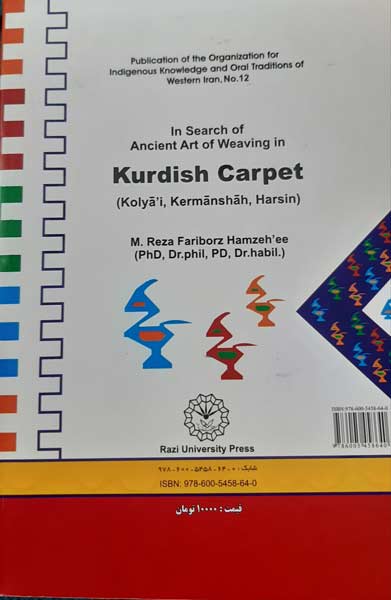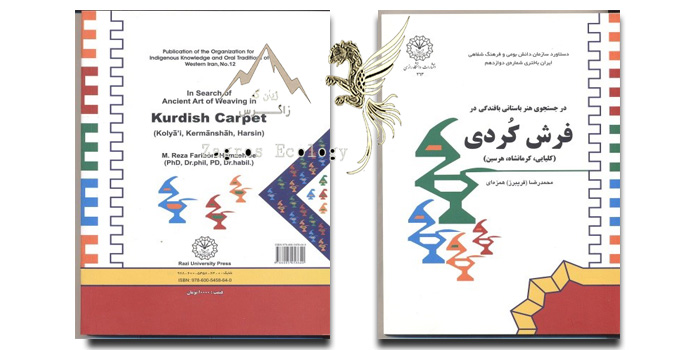book introduction
In Search of Ancirnt Art of Weaving in Kurdish Curpet
In Search of Ancient Art of Weaving in Kurdish Curpet ( Kolyā’i, Kermānshāh, Harsin).
In some of my previous works, I found it suitable to distinguish between natural and cultural environment or ecology. By cultural ecology it means all what man has created to compensate his numerous physical mental needs and weaknesses. All what has been created to compensate his physical needs and weaknesses is called material culture; whereas all others fall within the field of non-material culture. Wieving has been one of the most fascinating invention of man within the material culture in the last thousands of years.
In many parts of the world, especially in the so-called Middle East, wieving has not remained only in the field of material culture and deeply has entered the fields of artistic and regious activities.
This study is performed about traditional wieving activities in an important part of latter region, called by some writers as the “Cradle of Mankind” i.e. in Western parts of present Iran and Eastern part of present Iraq. This parts were the core of the Sassanid dynasty between Tthird and seventh centuries B.C. This long lived dynasty hat inherited all what had until then remained from all earlier Mesopotamian civilizations. During the Islamic periods for the first time during Saljuk Turkish rule the same part constiture a province which was officially called “Kurdistan”.
Art of Weaving in Kurdish Curpet ( Kolyā’i, Kermānshāh, Harsin)
Europeans travelers of eighteenth and nineteenth centuries have reportedthat in ealier time some of the most precious carpect used to be manufactured here. Accoding to them these carpects were called Kordi or Kurdish carpets. But this same name is now used the carpect of some other Kurdish speaking region and do not take especially a high postion in the world of carpets. The precious Kordi carpect has but disappeared since several centuries.
In this study it has been tried to explore all what has been survied about traditional wieving in the homeland of Kordi carpect in Kolyai and Harsin. The provincial capital of Kermanshah began to grow during Qajar period in eighteenth and nineteenth centuries as a result of migrations wievers from places like Harsin and Kolyai. Therfore this study concentrates on the weiving of these three places.
Surprisingly also in the process of field work in Harsin which is known for its Kelims, fascinating old carpets were discovered which can show us some idea about how the Kordi carpect could have looked like.
Harsin is located in south east Western Iranian city of Kermanshah and south west of Hamadan the ancient capital of the Median Empire.
Harsin has been inhabited since the pre-historical times. The pre-historical site of Harsin called “Bawa Khaki” has not yet be excavated. Among many archeological sites of Harsin county, Ganj Dara, is supposed to have been inhabited around 8000 BC i.e. eleven thousand five hundred years ago.
Some remainings of a fort and a palace, related to the Sassanid period has been investigated by Dietrich Huff.
Certainly without personal relations such relatively detailed study of wieving avtivities under present situation would not have been possible.
Organization of Indigenous Knowledge and Oral Tradition of Western Iran No.12 , 2013
In Search of Ancient Art of Weaving in Kurdish Curpet
( Kolyā’i, Kermānshāh, Harsin).

In PDF file for download : In Search of Ancirnt Art of Weaving in Kurdish Curpet
An interdisciplinary investigation about history and culture of Harsin

 فارسی
فارسی
